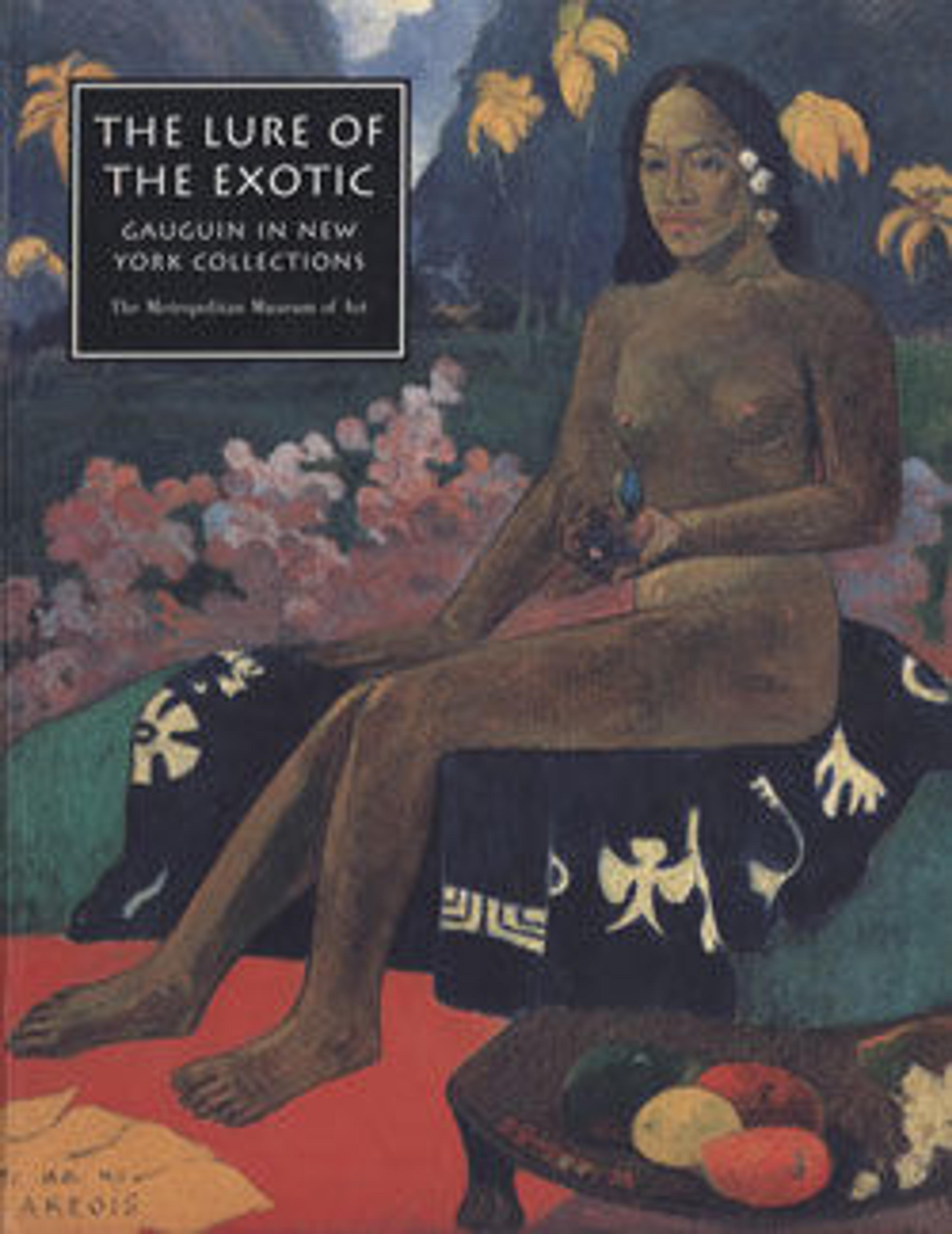Auti Te Pape
Gauguin began working on the text and illustrations for Noa Noa (Fragrant Scent) while in Paris in 1893-94 following his first voyage to Tahiti. The project was originally conceived as a narrative of Gauguin's personal and artistic perceptions of Tahiti but ultimately became something much more complex and mysterious, full of references to Tahitian creation myths and ancient Maori culture. Gauguin designed ten woodblock prints for Noa Noa, which function less as illustrations than as inspired corollaries: they bear little relationship to his romanticized autobiographical text, nor do they seem to follow any particular sequence. However, the imagery and themes of the prints - love and fear, creation and death, day and night - are in keeping with much of Gauguin's Tahitian oeuvre.
This print shows a female nude seated on a riverbank; a second woman with raised arms prepares to plunge into the river in the background. Images of beautiful young women bathing or lounging beside bodies of water reappear throughout Gauguin's Tahitian oeuvre. While this image was not meant as a literal illustration of the text of Noa Noa, it resonates with a section of the first chapter which describes women bathing their legs in the Fatana River.
This print shows a female nude seated on a riverbank; a second woman with raised arms prepares to plunge into the river in the background. Images of beautiful young women bathing or lounging beside bodies of water reappear throughout Gauguin's Tahitian oeuvre. While this image was not meant as a literal illustration of the text of Noa Noa, it resonates with a section of the first chapter which describes women bathing their legs in the Fatana River.
Artwork Details
- Title:Auti Te Pape
- Series/Portfolio:Noa Noa (Fragrance)
- Artist:Paul Gauguin (French, Paris 1848–1903 Atuona, Hiva Oa, Marquesas Islands)
- Date:1893–94
- Medium:Woodcut printed in color on wove paper
- Dimensions:8 1/8 x 14 1/8 in. (20.6 x 35.9 cm): block
10 13/16 x 18 1/2 in. (27.5 x 47 cm): paper - Classification:Prints
- Credit Line:Harris Brisbane Dick Fund, 1936
- Object Number:36.6.2
- Curatorial Department: Drawings and Prints
More Artwork
Research Resources
The Met provides unparalleled resources for research and welcomes an international community of students and scholars. The Met's Open Access API is where creators and researchers can connect to the The Met collection. Open Access data and public domain images are available for unrestricted commercial and noncommercial use without permission or fee.
To request images under copyright and other restrictions, please use this Image Request form.
Feedback
We continue to research and examine historical and cultural context for objects in The Met collection. If you have comments or questions about this object record, please contact us using the form below. The Museum looks forward to receiving your comments.
